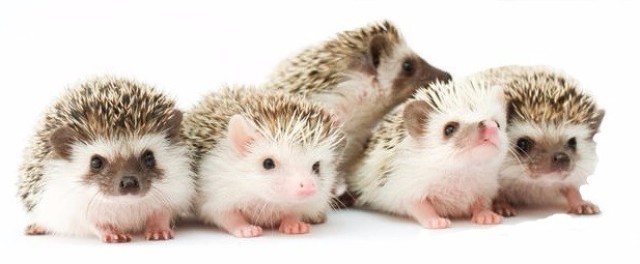Hedgehogs are easily recognized by their spines, which are hollow hairs made stiff with keratin. Their spines are not poisonous or barbed and, unlike the quills of a porcupine, do not easily detach from their bodies.
A hedgehog that feels threatened can roll into a tight ball, causing all of the spines to point outwards. When the creature is rolled into a ball, the quills on the back protect the tucked face, feet, and belly, which are not quilled. While forest hedgehogs are prey primarily to birds and ferrets, smaller species like the long-eared hedgehog are prey to foxes, wolves, and mongooses.
Hedgehogs are primarily nocturnal, though some species can also be active during the day. Hedgehogs sleep for a large portion of the day under bushes, grasses, rocks, or most commonly in underground dens. All wild hedgehogs can hibernate, though not all do, depending on temperature, species, and abundance of food.
Hedgehogs are fairly vocal and communicate through a combination of grunts, snuffles and/or squeals, depending on species. Hedgehogs occasionally perform a ritual called anointing. When the animal encounters a new scent, it will lick and bite the source, then form a scented froth in its mouth and paste it on its spines with its tongue. Some experts believe anointing camouflages the hedgehog with the new scent of the area and provides a possible poison or source of infection to predators poked by their spines.

